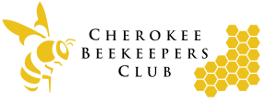 Startling discovery found in the results of the study done by entomologist Christian Krupke, and associate professor Elizabeth Long.
Startling discovery found in the results of the study done by entomologist Christian Krupke, and associate professor Elizabeth Long.
The pollen samples represented up to 30 plant families and contained residues from pesticides spanning nine chemical classes, including neonicotinoids – common corn and soybean seed treatments that are toxic to bees. The highest concentrations of pesticides in bee pollen, however, were pyrethroids, which are typically used to control mosquitoes and other nuisance pests.
“Although crop pollen was only a minor part of what they collected, bees in our study were exposed to a far wider range of chemicals than we expected,” said Krupke. “The sheer numbers of pesticides we found in pollen samples were astonishing. Agricultural chemicals are only part of the problem. Homeowners and urban landscapes are big contributors, even when hives are directly adjacent to crop fields.”
Read more at: Honeybees pick up ‘astonishing’ number of pesticides via non-crop plants
